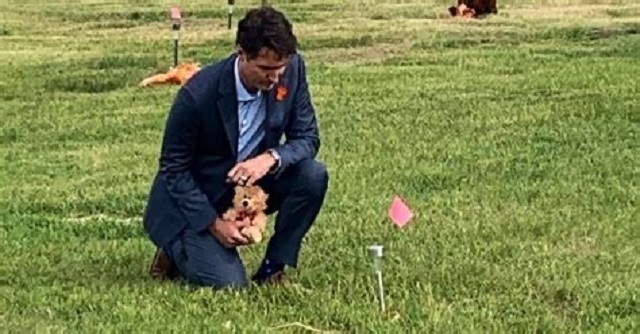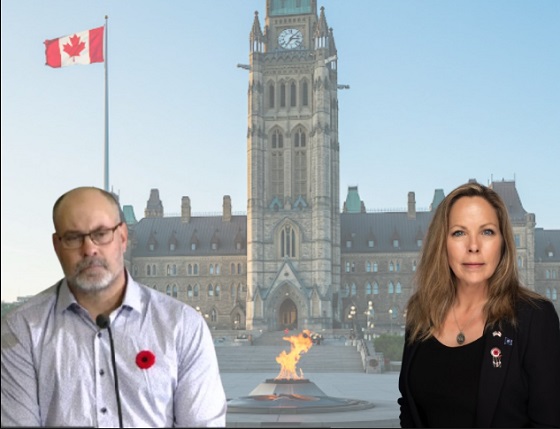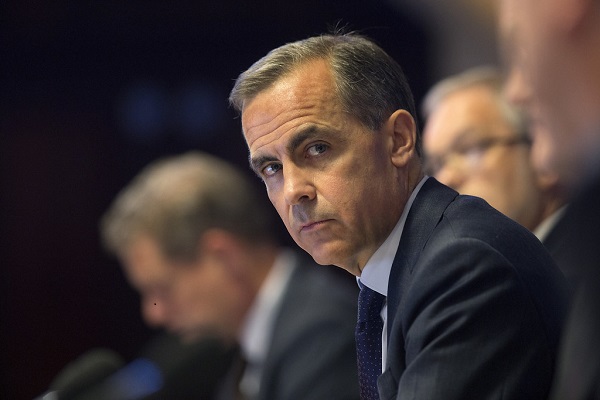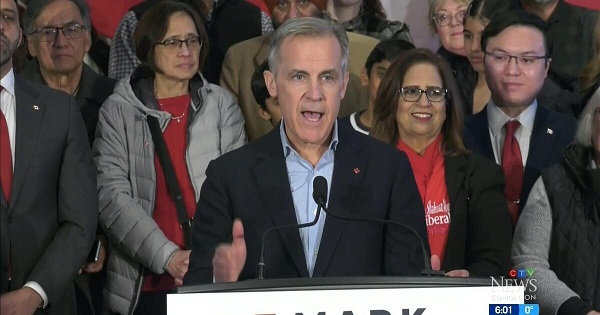C2C Journal
They Would Call Me a “Denier” – Let Me Explain what I Believe about Residential Schools in Canada

From The Frontier Centre for Public Policy
Originally posted in the C2C Journal by Rodney A. Clifton
In our largely “post-truth” society, the validity of a given statement is increasingly assessed based on who is making it. There are even those who believe that only some should be allowed to say certain things – while others should be scorned or even imprisoned for uttering the same words. This increasingly describes the discursive landscape concerning Canada’s Indian Residential Schools and whether Indigenous children disappeared from and/or were murdered there. Drawing on his lived experience as a onetime residential school employee, on his long academic record and, not least, on his personal courage in the face of those who wish to criminalize “denialism”, Rodney Clifton presents a humbly argued plea for Canadians to judge their country’s residential school record according to the truth – the actual, factual truth.
Over the last several years a new subspecies of Canadian has been named by some of our elites. They are called “deniers” and are said to be escalating a hateful, racially-motivated campaign to attack and denigrate Indigenous Canadians. The accusations have been numerous. One important recent example comes from Stephanie Scott, Executive Director for the National Centre for Truth and Reconciliation, who wrote, “Sadly…we see increased ugliness from those who deny our truths, experiences and oral histories as reality. Deniers will write their fringe blogs and substacks and leave their foul comments on social media challenging the documented experiences of Indigenous People, particularly residential school Survivors…They will say: ‘It didn’t happen,’ ‘It wasn’t that bad,’ ‘Some good came out of residential schools,’ or the most repugnant, ‘Children never died in those institutions.’”

Kimberly Murray (top), Canada’s Special Interlocutor for Missing Children and Unmarked Graves and Burial Sites, deems Indian Residential School (IRS) “denialism” to be “violence” and “hate”, while Indigenous lawyer Eleanore Sunchild (bottom) calls for its criminalization in Canadian law. (Sources of photos: (top) The Canadian Press/Justin Tang; (bottom) Jason Warick/CBC)
The deniers are apparently so dangerous that mere vitriol, insult, accusation and denunciation such as Scott’s won’t be enough to contain them. They must be driven from the public square and silenced; if need be, they must be imprisoned. Last summer, prominent Indigenous lawyer Eleanore Sunchild suggested that “denialism” should be added to Canada’s Criminal Code, so that there are “consequences for people who are promoting hatred”. Not long thereafter Kimberly Murray, currently the federal government’s “Independent Special Interlocutor for Missing Children and Unmarked Graves and Burial Sites associated with Indian Residential Schools”, echoed that proposal. “Denialism is violence,” Murray intoned in one news conference. “Denial is hate.” The then-federal Minister of Justice, David Lametti, said he would explore the matter of criminalization, as has his successor, Arif Virani.
The anti-“denialist” campaign now appears self-sustaining. Barely a week ago as I was writing this essay, the federal NDP Leader Jagmeet Singh in a speech to Indigenous leaders accused a federal Conservative Party candidate, Aaron Gunn, of being a “residential school denier”. Also in the past week, the National Post’s Chris Selley reported that the RCMP now consider writing articles critical of the dominant residential schools’ narrative to be a potential threat to national security.
It is likely that Scott, Sunchild, Murray, Singh and perhaps our national police force would think that I too am a “denier”. By their standards, I suppose I am. But before you dismiss me as uninformed – or worse – let me explain what I actually believe. I am one of a number of informed Canadians who question some – but not all – of the claims about what happened to Indigenous children in Indian Residential Schools (IRS). If you must label us, call us “questioning critics”.
Were Children Missing and Murdered?
Questioning critics examine the claim that thousands of Indigenous children who lived in residential schools and hostels are missing and that this is because many if not most of them were murdered by their caregivers. These institutions were funded by the federal government from 1883 to 1996 and the majority were managed by five Christian churches: Roman Catholic (62 schools and hostels), Anglican (35), United Church (19), Mennonite (3) and Baptist (1); the 23 others were managed by federal, provincial and territorial governments (source of these figures is pp. 33-35 of this book).

The majority of Canada’s IRS were run by Christian churches; the claim that many children who attended the IRS went missing or were murdered has brought disgrace to the churches, which have not defended themselves against such accusations. Shown, (top) boys at play outside Fort Providence Mission Indian Residential School, N.W.T.; (bottom) children and nuns in front of the IRS in Maliotenam, Québec, circa 1950. (Sources of photo: (top) Library Archives, licensed under CC BY 2.0; (bottom) Library Archives, licensed under CC BY 2.0)
The claim that thousands of schoolchildren were murdered or otherwise went missing is therefore a direct attack on the churches. But these churches, surprisingly, have not defended themselves and their thousands of former employees. Instead, they have either tried to hide from view or have fallen over themselves with repeated apologies, confessions and gestures of contrition. The Catholic Church’s “Sacred Covenant” with the Tk̓emlúps te Secwépemc First Nation (legally, the Kamloops Indian Band), described in this C2C article, is one such recent event.
Even so, the accusations against the IRS are difficult to believe for at least four reasons.
First, the federal Department of Indian Affairs (its exact name has varied over the decades) paid a per capita grant to the school administrators to care for the children and, as part of its oversight, the government required quarterly reports from school administrators showing the number of days each child had been at the school during the quarter. School inspectors regularly visited the schools to ensure that the students were being cared for and were attending. Even if Canadians today can’t believe that these officials cared about Indigenous children, the federal government wasn’t going to pay for students who didn’t exist or had disappeared. Yet we cannot find any documents indicating that any children were missing during the IRS system’s 113-year history.
Second, many responsible people, Indigenous as well as non-Indigenous, regularly visited the residential schools: chiefs, band councillors, parents, church officials and bureaucrats, along with dentists, medical doctors, nurses and optometrists. If students were going missing, surely someone among these many people would have discussed it with colleagues, raised the alarm among parents, notified the media or reported it to the proper authorities. Yet we cannot find any reports about missing children from any of these people.
Third, many of the residential school employees were themselves Indigenous, and their own children as well as the children of relatives and friends lived in the schools. Is it reasonable to assume that these employees would watch (or hear about) children being mistreated, or worse, murdered, and not report the malfeasance to Indian agents, chiefs, band councillors or the RCMP? Again, we can find no documents of any such thing happening.

Right under everyone’s noses? Children at the IRS were regularly observed by Indigenous and non-Indigenous visitors including bureaucrats, doctors, nurses, parents and chiefs; the author finds it very difficult to believe that children would go missing unnoticed or unreported. At right, a schoolchild and his grandmother at the St. Barnabas Indian Residential School mission hospital, Sarcee Reserve, Alberta. (Sources of photos: (left) The Canadian Press/Library and Archive Canada/Handout, retrieved from Global News; (right) Anglican General Synod Archives in Toronto)
Finally, questioning critics wonder why the extremely serious accusation of missing and murdered children – including some reportedly buried in schoolyards – was not included in the enormous, seven-volume report of the Truth and Reconciliation Commission (TRC), published in 2015. It seems strange that among the report’s 94 Calls to Action (i.e., recommendations or demands), there isn’t one demanding a search for children who were claimed to be missing, murdered or buried in schoolyards. (Volume 6 has six calls, numbers 71-76, to search for unmarked graves in mission cemeteries lying close to residential schools, but any child who had been buried in a formal ceremony was obviously not missing or murdered.) Questioning critics also wonder why the mainstream media didn’t report on this obvious anomaly.
This whole issue seems to have sprung up recently and for still-unknown reasons. It seems reasonable to propose that if children were murdered in residential schools, that information would have been reported long before May 27, 2021, when Kamloops Chief Rosanne Casimir announced that a recent investigation had provided “confirmation of the remains of 215 children who were students at the Kamloops Indian Residential School.” The federal government sent almost $8 million to the band to investigate this claim but, so far, no excavations have even been initiated, let alone have any human remains been exhumed.
Of course, informed Canadians know that bad, abusive and unacceptable things took place in residential schools. Neither I nor any other questioning critic whom I know denies this or tries to suppress it. No one, in fact, denies that some Indigenous children died while registered in some schools. Nor do I have any reason to doubt the statement by former Assembly of First Nations Grand Chief Phil Fontaine that he had suffered sexual abuse while attending an IRS, something that, undoubtedly, shocked the nation when he first said it in a TV interview in 1990.

Why now? The author finds it puzzling that the issue of missing or murdered children, such as the “confirmation of the remains of 215 children” erroneously claimed by Kamloops Chief Rosanne Casimir (top) in May 2021, did not arise years earlier, nor was mentioned at all in the seven-volume report of the Truth and Reconciliation Commission (TRC) published in 2015. (Sources of photos: (top) BC Gov Photos, licensed under CC BY-NC-ND 2.0; (bottom) megan.mason, licensed under CC BY 2.0)
Volume 4 of the TRC Report states that a total of 3,201 IRS students died (see pp. 33-35 of the linked document), mostly in the early years and mostly from infectious diseases like influenza and tuberculosis. Unfortunately, the Commission did not provide comparison data on the number of Indigenous children who died but were not in IRS, or the number of non-Indigenous children who died of the same diseases during the same period. Thus, the TRC Report leaves readers with the impression that residential school students died at much higher rates than children who did not attend residential schools. To verify this claim, more detailed analyses are needed.
My Experience with Indian Residential Schools
Questioning critics also suggest that some good things happened, at least in some schools. This would be one point of “agreement” with Scott, who as I explained above accuses “deniers” of (falsely, in her mind) asserting that some good came out of residential schools. I have had direct experiences that speak to this point.
I lived in an Anglican Church-run residential school, Old Sun (which like about 40 percent of the IRS bore an Indigenous name, in this case that of a famous Chief), on the Siksika First Nation (Blackfoot Reserve) in southern Alberta during the spring and summer of 1966. I was a university student intern working for the Band, and I had a room in the teachers’ wing at Old Sun. I saw what staff and students were doing and I heard the languages they were speaking. In fact, the Indigenous employees in the school and the Band Office were eager to teach me Siksika.
After the summer internship I got a job in the far north for the 1966-1967 school year, working as the Senior Boys’ Supervisor in Stringer Hall, the Anglican hostel in Inuvik, NWT. In that position, I managed the daily activities of 85 mostly Indigenous boys in three dorms, being on duty for 22 hours a day, six days a week. I kept notes about what I saw and what the children said and did.

As a living witness to life at two residential schools in the 1960s, the author recalls his overwhelmingly positive experiences at Old Sun Indian Residential School, Blackfoot Reserve, Alberta (top) and at Stringer Hall, Inuvik, N.W.T. (middle and bottom), of which he kept detailed records.
During my time at Old Sun, I met a young Siksika woman, Elaine Ayoungman. We fell in love and were married in 1968, and we’re still married today, 56 years later. Elaine attended Old Sun for 10 years. Her parents and most of her nine siblings also attended the same school, and over the years I heard many accounts of their experiences.
As a researcher, I have published several articles on the relationship between Indigenous and non-Indigenous people. My first article on the integration of Dene, Inuit, Metis and non-Indigenous children in Stringer Hall was published in 1972, long before the current controversy about missing residential schoolchildren was in the news. Still, even with my experience and knowledge, and following a nearly 50-year-long academic and public policy research career, I am now to be considered a “denier”.

“Many students…have spoken positively about the impact that specific teachers had on their lives,” admitted the TRC Report, which also contains happy reminiscences and quotations from former IRS students; anyone making similar statements today is quickly denounced as a “denier” – and some even want them criminally charged and imprisoned.
These are just two of the positive, even heartwarming statements recounted in the TRC Report. It is sad that more Canadians have not read these stories; I hope some of you do so while you still can. Scott, Sunchild, Murray and others not only want me prevented from writing and speaking on this subject, some of them would want me sent to prison – merely for repeating what I personally witnessed, physically experienced, noted in writing at the time, and which, in a number of instances, closely corresponds to what was formally recorded in the TRC Report.
What is it We Are Really Questioning?
Among the strangest aspects of the campaign to prevent questioning of the official IRS narrative is the recurring claim that critics “deny residential schools”, as if some people are pretending the IRS system never even existed. For example, in Murray’s call for “denialism” to be made a crime, she stated that one of the sanctioned offences would be “denying that residential [schools] happened.” Another instance came during the recent eruption in Quesnel, B.C. over the local mayor’s wife’s decision to share a controversial book with a few friends. One media account claimed the book in question, the best-selling Grave Error: How the Media Misled Us (and the Truth about Residential Schools), “questions the existence of residential schools.”
This is utterly bizarre. Possibly it reflects seriously slipshod thinking and writing; perhaps it’s an attempt to make the critics appear plain crazy. But I know of no-one who denies that residential schools existed and operated for over a century. As for me, remember that I lived and worked in two of them and I married a woman who attended one for 10 years at a time when fewer than 30 per cent of Indigenous children were enrolled in residential schools and the average time they spent was less than five years (see pp 29-33 of this book).
I do, accordingly, question that 150,000 Indigenous children were torn from the arms of their crying mothers and forced to go to school against their parents’ wishes, as the current narrative constantly claims. Even in the early days, most parents signed admission forms to enroll their children in school. When I worked at Siksika First Nation, I travelled around the reserve registering children for school, and I cannot remember any parent who was reluctant to complete the registration forms or any child who did not look forward to going to school.

The author’s personal experiences call into question the widespread belief that Indigenous children were forcibly removed from their families to attend residential school; on the contrary, it was common for parents to sign a school enrollment form. Shown at left, The Scream, by Kent Monkman, 2017; at right, the application by Susan Drever for admission of her daughter Neta Drever to the Birtle Indian Residential School.
When I asked my mother-in-law, Nora, what she learned in Old Sun, she replied, “I’m talking to you, aren’t I?” She meant that she was speaking English, which she learned from her residential schoolteachers. Nora also implied that, thanks to learning English, she was able to communicate with other Indigenous people who did not speak Siksika, her mother tongue.
Of course, my mother-in-law thought that going to school and learning to speak, read and write in English was an advantage. But I would not call her or my wife “deniers”. All members of the Ayoungman family spoke Siksika fluently and took part in many cultural activities. Their time in residential school did not wipe out or even weaken their Indigenous culture or identity – but it did prepare them to deal with and navigate in modern-day Canada. (There is a fuller account of my time working at residential schools in this C2C article.)
The above exchange occurred as we were driving back to Winnipeg from the 1993 National Native Convocation in which the Anglican Archbishop and Primate, Michael Peers, apologized to Indigenous people, many of whom had attended the 35 schools and hostels managed by the Anglican church. There were frank and open discussions during the conference, but no one suggested that hundreds, let alone thousands, of children were missing and probably buried in residential schoolyards.

In August 1993, Anglican Archbishop and Primate Michael Peers delivered an apology to the National Native Convocation; while the three-day discussion included many testimonies of former IRS students, none mentioned missing or murdered children. (Source of photo: The Anglican Church of Canada)
As well, informed Canadians and the questioning critics know that in southern Canada, many residential school students went home on weekends and during school holidays. If children were abused by other children or by residential school employees, some of them surely would have told their parents, who would have reported the abuse to Indian agents, chiefs or members of the band councils. But we have found no reports from these people.
Although the next thing will surprise and perhaps even shock readers who have only been exposed to the official narrative about residential schools, I swear this to be the truth: almost all the stories I heard about residential schools and hostels were about positive and humorous things that happened. These included the sports days, Halloween and Christmas parties, the tricks the children played on their supervisors (myself included), or the fact that the schoolkids tried to teach staff like me their native language.
I did, however, hear from my parents-in-law about one case of abuse. Their oldest daughter, Rosella, who was about 9 or 10 at the time, had been forced by her residential supervisor to eat her breakfast cereal after she had thrown-up in the bowl. Rosella told her father, Arthur, about this incident when she was home for the weekend. When the family returned to Old Sun for Sunday church service, her father and grandfather, Anthony, met with the Anglican priest/principal, who listened to their complaint. Within a few days, the supervisor was fired.
Obviously, this quick action did not happen in all cases. And again: neither I nor any of the other questioning critics with whom I’m familiar denies that serious abuses occurred in residential schools, that these abuses were wrong, and that the abusers should have been more effectively investigated and punished. Nevertheless, my example illustrates that at least in some schools, the administrators supported the children under their care and held their staff to account. The TRC Report does not, unfortunately, tell us how many school administrators and supervisors acted honourably towards the children. Instead, it leaves the impression that all residential school employees, both non-Indigenous and Indigenous, treated the children as if they were sub-human (see Volume 5, pp 139-140).

The author’s personal recollections about residential schools are largely positive and many are light-hearted or even humorous. Shown at top left, Christmas presentation at Portage la Prairie Residential School, Manitoba, 1950s; at bottom left, Portage Residential School hockey champion team, Manitoba, 1964. (Sources of photos: (top left) UCCA, 1986.158P/59; (bottom left) UCCA, 1986.158P/62; both retrieved from The Children Remembered; (right) Library Archives, licensed under CC BY 2.0)
For all these reasons, I am skeptical of some – but not all – of the things being claimed about the church-run Indian Residential Schools. Increasingly, I’m hearing that other Canadians are skeptical too.
What Needs to be Done?
The questioning critics strongly believe that something needs to be done because this issue is festering and polarizing Canadian society, not only between the purveyors of the official narrative and ourselves (those they call “deniers”), but also between Indigenous and non-Indigenous Canadians more broadly and, as I have heard, even within some Indigenous communities. A detailed poll of over 3,000 people by the Angus Reid Group late last year revealed deep (though uneven) divisions among Canadians on core elements of this issue. For example, while 19 percent think the “legacy of colonialism” is “a huge problem”, 17 percent think it is “not at all” a problem. While 55 percent believe Indigenous people do have and should have a special status, 45 percent think they should be treated like other Canadians. While 49 percent think the situation of Indigenous people as a whole has improved in the past 10-15 years, 38 percent think it has worsened. While 19 percent think Indigenous children were “purposely killed” at residential schools, 39 percent think any deaths were due to “neglect”, and 13 percent think they were due to “uncontrollable factors”. And on it goes. This stand-off is not serving Indigenous people, nor is it helpful in reaching an honourable and fair reconciliation.

Open wounds: Recent polling by the Angus Reid Institute revealed that Canadians are profoundly divided on issues related to the IRS’ legacy; the author believes that such division is not conducive to an honourable reconciliation. (Source of charts: Angus Reid Institute)
Let’s pretend for a moment that the Justin Trudeau government had actually made “denialism” a crime and consider the implications of enforcing it. Had that law been in place in 2021, it would become a crime to quote or reprint certain portions of the TRC Report. Technically, some of the statements by the commissioners themselves would be criminal. Then, as soon as Chief Casimir made her announcement referring to “confirmed” “remains” of “children”, it would have become a crime to (correctly) suggest that the ground-penetrating radar survey had merely shown subsurface “anomalies” that could just be disturbances from old excavations.
Let’s also say that a few reckless deniers said so anyway and were packed off to prison. What would happen when, three years later, Casimir suddenly started talking – as she has done – about “anomalies” while quietly dropping the other claims? Would she then join the other deniers in prison for “denying” the “facts” of the “mass graves”? Of course she would be spared. But what would happen to the imprisoned deniers? Now that the formerly criminal word “anomalies” suddenly reflected the official narrative, would they be quietly released in the middle of the night? And if they were, would they then get to sue the federal government for their mistreatment, and each collect a few million dollars in out-of-court settlements for the harassment and false imprisonment they endured?
This seemingly fanciful scenario-spinning reflects the absurdity of criminalizing residential school “denialism”. Because really, there is no such thing; all we have are differences of opinion over the meaning of the available evidence and disputes concerning the body of facts at hand. Thankfully, there is a way out of this seemingly intractable impasse. We need to get at the truth in a way that will satisfy everyone. As the TRC commissioners themselves said, reconciliation depends on uncovering the truth.
First, the federal government should appoint a blue-ribbon RCMP task force to investigate the accusations that children are missing and possibly murdered at residential schools. The task force must have the expertise, resources and legal authority, backed by the necessary political will, to conduct a thorough investigation to its conclusion. Unfortunately, Indigenous organizations have so far resisted such a thorough criminal investigation – like the abortive criminal probe launched soon after the Kamloops allegations, which was suspended within days. But it needs to be done.
Second, if this task force finds evidence of malfeasance, a forensic investigation should be conducted in the schoolyards where people think residential schoolchildren were buried. (It’s important to be aware that to date, the only human remains found have been in neglected cemeteries, not any of missing children in schoolyards or the basements of churches.) It is worth mentioning again that the investigation must be conducted by competent independent professionals and not by either the churches or the Indigenous bands.
Third, if this investigation finds evidence that children were murdered, the school employees who are still living, both non-Indigenous and Indigenous, should be questioned and if there is evidence that they were involved in abusing or murdering children, they should be criminally charged and prosecuted to the full extent of the law. Also, the names of deceased employees who abused or murdered children should be published.
Finally, a report of the investigation should be tabled in Parliament and distributed to Canadians, just as the TRC Report was distributed.
Thousands of Canadians, both Indigenous and non-Indigenous, worked in residential schools. For their sake, for the sake of the churches who managed most of the schools, for the sake of Indigenous people and, indeed, for all Canadians, it is time to conduct a proper investigation, including forensic analyses, of the claim that children were murdered in residential schools. This is the only way to address the accusation that some Canadians are “denialists” and to ease the polarization of Canadian society on this very important human and public policy issue.
C2C Journal
“Freedom of Expression Should Win Every Time”: In Conversation with Freedom Convoy Trial Lawyer Lawrence Greenspon

Lawrence Greenspon Defends the Fundamental Freedoms of All Canadians
By Lynne Cohen
“Law is an imperfect profession,” famed American lawyer Alan Dershowitz – defender of such notorious clients as Claus Von Bülow, Jeffrey Epstein, Harvey Weinstein and O.J. Simpson – once wrote. “There is no perfect justice…But there is perfect injustice, and we know it when we see it.”
Like Dershowitz, Lawrence Greenspon has spent a career fighting injustice in all its forms. Over the past 45 years Greenspon has become one of Canada’s best-known criminal lawyers through his defence of a long list of clients at risk of being crushed by Canada’s legal system – from terrorists to political pariahs to, most recently, Tamara Lich, the petite grandmother who became the public face of the 2022 Freedom Convoy protest.
In taking on these cases, Greenspon is not only giving his clients the best defence possible, he’s also defending the very legitimacy of Canada’s legal system.
Lich faced six charges and up to 10 years in jail for her role organizing the peaceful Ottawa protest. Earlier this month she was found guilty on a single charge of mischief. The Crown says it intends to seek a two-year sentence for that one charge.
In an interview, Greenspon said he decides on cases based on whether he believes in the cause central to the case: “What’s at stake. And can I make a difference?” What attracted him to Lich’s case were key aspects of the Charter of Rights and Freedoms that Greenspon felt needed defending. “Canadians have a constitutionally protected right to freedom of expression and freedom of peaceful assembly,” he said. “These are fundamental freedoms, and they’re supposed to be protected for all of us.”
At issue was the impact the protest had on some downtown Ottawa residents and whether that conflicted with Lich’s right to free speech and peaceful protest. “We were prepared to admit right off the bat that there were individuals who lived in downtown Ottawa who experienced some interference with their enjoyment of their property,” Greenspon noted.
“But when you put freedom of expression and freedom of peaceful assembly on a scale against interference with somebody’s enjoyment of property, there’s no contest. Freedom of association and peaceful assembly, and freedom of expression – these should win every time.”
Such a spirited defence of Canadians’ Charter rights is characteristic of the entire body of Greenspon’s legal work. Although his clients aren’t always as endearing as Lich.
Prior to being in the spotlight for the Lich trial, most Canadians probably remember Greenspon from the 2008 trial of Mohamed Momin Khawaja, the first person charged under Canada’s Anti-Terrorism Act. The evidence against Khawaja was substantial and convincing. He was even planning a suicide mission against Israel. Greenspon is a Jew. It was not an issue.
“The fundamental point is that everybody’s entitled to a defence,” Greenspon said. What really mattered was the constitutionality of the new terror law, which Greenspon argued impinged on the free speech rights of Canadians.
In 2018 Greenspon represented Joshua Boyle, who faced over a dozen criminal charges stemming from accusations made by his wife Caitlin Coleman after they returned from being held captive in Afghanistan. Greenspon’s meticulous cross-examination of Coleman led Judge Peter Doody of the Ontario Superior Court of Justice to conclude, “I do not believe her, just as I do not believe Mr. Boyle.” All charges against Boyle were dismissed.
He also defended Senator Mike Duffy, who in 2014 found himself charged in connection with an expense account scandal. “Duffy’s presumption of innocence had been completely annihilated. I had no problem representing Mike. In fact, I feel proud to have represented Mike,” he said.
Throughout his legal career, Greenspon has fought tirelessly for the constitutional rights of all his clients, regardless of public sympathy or apparent guilt. While such a stance can make him unpopular, such work offers a crucial bulwark against the state’s misuse of its authority in pursuing particular individuals, as well as the gradual erosion of the liberties promised to all Canadians by the Charter of Rights and Freedoms.
Every Canadian has a stake in ensuring the court system is held to account at all times, regardless of the apparent evidence, current political mood or public support.
Without the work of lawyers such as Greenspon, Charter rights can soon deteriorate into empty platitudes – as the federal government’s shocking treatment of the peaceful Freedom Convoy protesters revealed. That included the unjustified imposition of the Emergencies Act, the freezing of donors’ bank accounts, the mass arrest of supporters and the marked reluctance to grant bail to those charged.
As Greenspon pointed out numerous times during the trial, the conciliatory and always respectful Lich represents the very ideals of peaceful protest in Canada. And for the sole charge on which she was convicted, she still faces two years in a federal penitentiary.
In the case of Khawaja, Greenspon was asked by an Ottawa synagogue to explain why he, as a Jew, was defending an Islamist terrorist. “I told the synagogue members, somebody has to stand up for the person who finds themselves set against the entire machinery of the state. In this case it happens to be Khawaja. But what if the next guy is named Dreyfus?”
Lynne Cohen is a writer at C2C Journal, where the longer original version of this story first appeared.
C2C Journal
Natural Gas – Not Nuclear – Is the Key to Powering North America’s Future

From the C2C Journal
By Gwyn Morgan
After decades on the outs with environmentalists and regulators, nuclear power is being heralded as a key component for a “net zero” future of clean, reliable energy. Its promise is likely to fall short, however, due to some hard realities. As North America grapples with the challenge of providing secure, affordable and sustainable energy amidst soaring electricity demand, it is time to accept this fact: natural gas remains the most practical solution for powering our grid and economy.
Nuclear power’s limitations are rooted in its costs, risks and delays. Even under ideal circumstances, building or restarting a nuclear facility is arduous. Consider Microsoft’s much-publicized plan to restart the long-dormant Unit 1 reactor at Three Mile Island in Pennsylvania. This project is lauded as proof of an incipient “nuclear revival”, but despite leveraging existing infrastructure it will cost US$1.6 billion and take four years to bring online.
This is not a unique case. Across North America, nuclear energy projects face monumental lead times. The new generation of small modular reactors (SMRs), often touted as a game-changer, is still largely theoretical. In Canada – Alberta in particular – discussions around SMRs have been ongoing for years, with no concrete progress. The most optimistic projections estimate the first SMR in Western Canada might be operational by 2034.
The reality is that nuclear energy cannot scale quickly enough to meet urgent electricity needs. Canada’s power grid is already strained, and electricity demand is set to grow significantly, driven by electric vehicles and enormous data centres for AI applications. Nuclear power, even if expanded aggressively, cannot fill the gap within the necessary timeframes.
Natural gas, by contrast, is abundant, flexible, low-risk – and highly affordable. It accounts for 40 percent of U.S. electricity generation and plays a critical role in Canada’s energy mix. Unlike nuclear, natural gas infrastructure can be built rapidly, ensuring that new capacity comes online when it’s needed – not decades later. Gas-fired plants are cost-effective and capable of providing consistent, large-scale power while being capable of rapid starts and shut-downs, making them suitable for meeting both base-load and “peaking” power demands.
Climate-related concerns surrounding natural gas need to be put in perspective. Natural gas is the lowest-emission fossil fuel and produces less than half the carbon dioxide of coal per unit of energy output. It is also highly adaptable, supporting renewable energy integration by compensating for the intermittency of wind and solar power.
Nuclear energy advocates frequently highlight its zero-emission credentials, yet they overlook its immense challenges, not just the front-end problems of high cost and long lead times, but ongoing waste disposal and future decommissioning.
Natural gas, by comparison, presents fewer risks. Its production and distribution systems are well-established, and North America is uniquely positioned to benefit from the vast reserves underlying all three countries on the continent. Despite low prices and ever-increasing regulatory obstacles, Canada’s natural gas production has been setting new records.
Streamlining regulatory processes and expanding liquefied natural gas (LNG) export capacity would help revive Canada’s battered economy, with plenty of natural gas left over to help meet growing domestic electricity needs.
Critics argue that investing in natural gas is at odds with the “energy transition” to a glorious net zero future, but this oversimplifies the related challenges and ignores hard realities. By reducing reliance on dirtier fuels like coal, natural gas can help lower a country’s greenhouse gas emissions while providing the reliability needed to support economic growth and renewable energy integration.
Europe’s energy crisis following the recent reduction of Russian gas imports underscores natural gas’s vital role in maintaining reliable electricity supplies. As nations like Germany still phase out nuclear power due to the sheer blind ideology of their left-wing parties, they’re growing more dependent on natural gas to keep the lights (mostly) on and the factories (partially) humming.
Europe is already a destination for LNG exported from the U.S. Gulf Coast, and American LNG exports will soon resume growth under the incoming Trump Administration. Canada has the resources and know-how to similarly scale up its LNG exports; all we need is a supportive federal government.
For all its theoretical benefits, nuclear power remains impractical for meeting immediate and medium-term energy demands. Its high costs, lengthy timelines and significant remaining public opposition make it unlikely to serve as North America’s energy backbone.
Natural gas, on the other hand, is affordable, scalable and reliable. It is the fuel that powers industries, keeps homes warm and provides the stability our electricity grid needs – whether or not we ever transition to “net zero”. By prioritizing investment in natural gas infrastructure and expanding its use, we can meet today’s energy challenges head-on while laying the groundwork for tomorrow’s innovations.
The original, full-length version of this article was recently published in C2C Journal.
Gwyn Morgan is a retired business leader who was a director of five global corporations.
-

 2025 Federal Election19 hours ago
2025 Federal Election19 hours agoThe Federal Brief That Should Sink Carney
-

 2025 Federal Election21 hours ago
2025 Federal Election21 hours agoHow Canada’s Mainstream Media Lost the Public Trust
-

 2025 Federal Election24 hours ago
2025 Federal Election24 hours agoOttawa Confirms China interfering with 2025 federal election: Beijing Seeks to Block Joe Tay’s Election
-

 2025 Federal Election23 hours ago
2025 Federal Election23 hours agoReal Homes vs. Modular Shoeboxes: The Housing Battle Between Poilievre and Carney
-

 John Stossel20 hours ago
John Stossel20 hours agoClimate Change Myths Part 2: Wildfires, Drought, Rising Sea Level, and Coral Reefs
-

 COVID-1922 hours ago
COVID-1922 hours agoNearly Half of “COVID-19 Deaths” Were Not Due to COVID-19 – Scientific Reports Journal
-

 2025 Federal Election2 days ago
2025 Federal Election2 days agoPoilievre Campaigning To Build A Canadian Economic Fortress
-

 Automotive2 days ago
Automotive2 days agoCanadians’ Interest in Buying an EV Falls for Third Year in a Row

